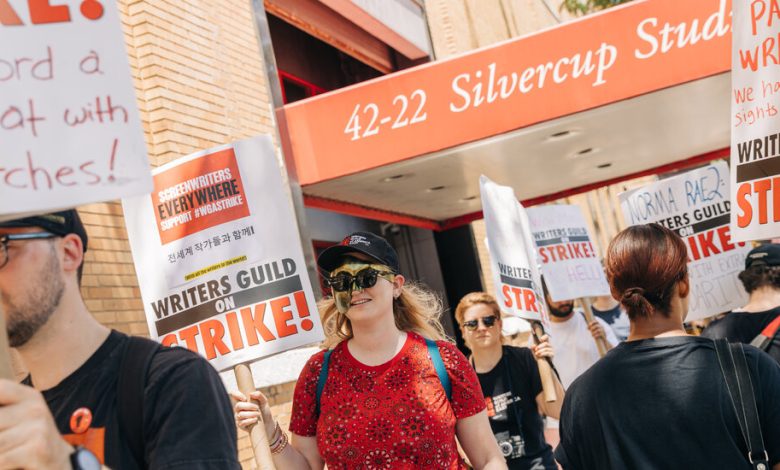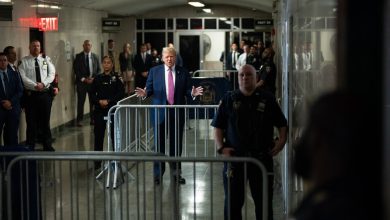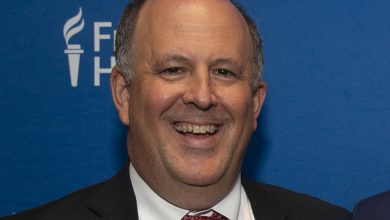Amid Strikes, One Question: Are Employers Miscalculating?

The list of gains that the Hollywood writers secured to end a nearly five-month strike with studios once seemed ludicrously ambitious: not just wage increases, but also minimum staffing levels for shows, new royalties on successful series and restrictions on outsourcing writing duties to artificial intelligence.
Yet far from an anomaly, the writers’ deal was the latest high-profile labor standoff that seemed to produce substantial gains for workers, and to suggest that they have more leverage than in the past.
United Parcel Service employees won large pay increases for part-timers by pushing the company to the brink of a strike, while the lowest-paid academic student employees at the University of California won salary increases of more than 50 percent after a monthlong strike affected thousands of students.
Given the unions’ apparent bargaining power and the economic costs to a prolonged work stoppage, the question arises: Why wouldn’t management make its eventual concessions more quickly?
The answer, many union and management experts say, is that employers are increasingly miscalculating — acting from a template that applied in previous decades, when employees had little leverage, and underestimating the frustration and resolve in the postpandemic work force.
“Psychologically, it’s a big shift: They’ve been in control. They have been able to tell their representatives to go and get concessions on X and Y, to make sure the wage increase is modest,” said Thomas Kochan, an emeritus management professor at the Massachusetts Institute of Technology, referring to corporate executives.
“Now, they have to change their expectations internally,” Dr. Kochan added. “They have a lot of work to do.”
In example after example, executives appear to have been taken aback by unions’ new, more assertive leaders and their success at rallying members and the public, as well as the ineffectiveness of the employers’ traditional bargaining approach.
In Hollywood, the Alliance of Motion Picture and Television Producers, which represents entertainment companies in negotiations with writers, directors and actors, has frequently tried to forge a deal with one of the three guilds, then push the other two to accept similar terms.
That appeared to be the group’s strategy this year as well: After the writers went on strike in May, the alliance reached a deal with directors the next month. But any hope that the writers would be isolated collapsed when SAG-AFTRA, the union representing more than 150,000 actors, went on strike in July.
“The playbook was clearly outdated,” said Peter Newman, a longtime independent producer who heads a dual-degree master’s program in business and fine arts at New York University’s Tisch School of the Arts.
Still, Mr. Newman said, the strikes saved the studios hundreds of millions of dollars on shows in the short term as Wall Street was pressuring them to cut costs.
The producers’ alliance declined to comment for this article.
In Detroit, the three major U.S. automakers had grown accustomed to closed-door negotiations with the United Automobile Workers union, in which the parties did not disclose the potential terms until they reached an overall agreement.
But in the run-up to this year’s mid-September strike deadline, the union’s new president, Shawn Fain, appeared to wrong-foot executives at Ford Motor, General Motors and Stellantis — which makes the Chrysler and Jeep brands — by disclosing and deriding the companies’ offers. In one case, he literally threw a Stellantis proposal in the garbage.
The companies’ responses — a Stellantis executive sent employees a letter saying that “theatrics and personal insults will not help,” while Ford and G.M. have also expressed impatience — may have further galvanized members and built public support. Polls have found that the public supports the autoworkers over the companies by large margins, and that the margins increased after the U.A.W. began a limited strike.
“It doesn’t seem like they were prepared for the direction he was headed with his public comments,” David Pryzbylski, a labor lawyer who represents employers at Barnes & Thornburg, said of the reaction to Mr. Fain. “The way they have responded may have escalated it further versus letting it die out.”
Stellantis declined to comment. Auto industry executives argue that they have made historically generous offers, and that they haven’t been put off by Mr. Fain’s outspokenness so much as what they say are the showmanship and the unrealistic expectations he has created.
Mr. Pryzbylski emphasized that it was too early to tell whether the landscape had tilted to labor’s advantage for the longer term, or just temporarily. The outcome of the U.A.W. strike remains unclear, and the workers’ resolve could diminish if the strike drags on for weeks. Talks between the sides are ongoing.
Other management-side lawyers said that while a handful of executives might have miscalculated of late, there was no broader trend in this direction. They say that employers remain capable of assessing and acting in their self-interest, and that unions are equally capable of miscalculating.
“People are sophisticated on both sides,” said Marshall Babson, a longtime management-side lawyer and former member of the National Labor Relations Board. “From my experience, good negotiators don’t get distracted by pyrotechnics.”
But in many cases, what has changed is not so much the bluster from union leaders as their willingness to follow through — a potentially disruptive shift after years of often empty threats.
When Sean O’Brien, the Teamsters president, ran to succeed his longtime predecessor, James P. Hoffa, in 2021, he promised to raise wages for part-time workers at UPS, many of whom had long felt shortchanged.
And yet, according to two people close to the negotiations, the company seemed caught off guard when talks broke down over the issue on July 5 — Mr. O’Brien’s initial deadline.
Mr. O’Brien and the union spent the next few weeks publicly attacking UPS over what the union referred to as “part-time poverty” jobs before the company agreed to hourly wage increases for part-timers of more than $7.50 over the life of the new five-year contract.
Shortly after a tentative deal was reached in late July, the UPS chief executive, Carol Tomé, said the company had expected the negotiations “to be late and loud, and they were.” The company declined to comment for this article.
Part of the challenge for employers is public opinion: Confidence in big business is at its lowest point in decades, according to Gallup, while approval of labor unions is close to its highest. Mr. Fain and Mr. O’Brien appear to have devised their public campaigns to press this advantage.
Unions also appear to have benefited from new methods of keeping members focused on shared goals — as when writers erupted on social media over the news that the talk show hosted by Drew Barrymore would return before the strike ended. (Ms. Barrymore soon reversed course.)
And rank-and-file members appear to have become more committed to their leaders’ negotiating strategy as unions have become more democratic and involved members more in the push for a contract, said Jane McAlevey, a longtime labor organizer and scholar.
But perhaps most important, employers seem to be underestimating the determination of workers, who believe they have little to lose from striking amid rising prices and fundamental shifts in their industry that have sometimes made their jobs more precarious.
A few weeks after the writers walked off the job this spring, Mae Smith, a strike captain and former writer on the Showtime series “Billions,” predicted in an interview that the economic pain of a protracted strike against the studios would not discourage the writers because “unfortunately they’ve been training us to live off very few months of work for a long time.”
The prediction largely held, in something of a departure from the 2007 writers’ strike. Back then, when streaming felt like a distant threat, there were some splits within the Writers Guild over how aggressive to be, said Chris Keyser, a past president of the union.
This time, the writers appeared particularly unified by the looming role of artificial intelligence, an issue on which the studios largely refused to engage for months.
“A number of C.E.O.s, when we talked to them later about A.I., said that was a mistake,” recalled Mr. Keyser, a co-chair of the writers’ negotiating committee this year.
(The writers did compromise on some key issues in the end — there is no ban on studios’ use of scripts they own to train A.I. tools, though the guild reserved the right to challenge instances of this.)
Dr. Kochan of M.I.T. said the concession from studios on artificial intelligence was especially significant because it highlighted another shift: employers’ diminished ability to limit negotiations to conventional issues like wages and benefits while often reserving the right to control other aspects of the job, like technology adoption.
“For decades, management has been able to say: ‘These are our decisions, our prerogatives. It’s none of your business,’” he said.
With the breakthrough on artificial intelligence, he added, “this is a new day — that’s why the writers’ strike was so important.”




